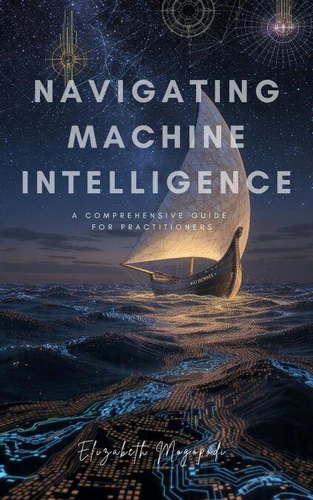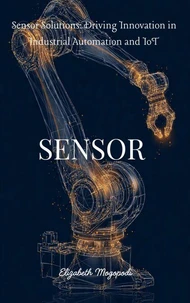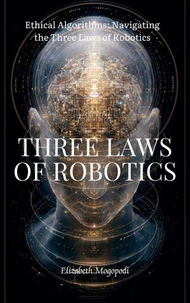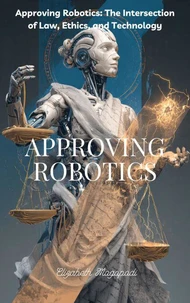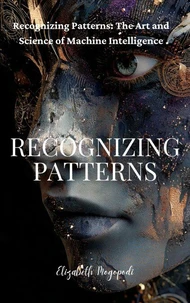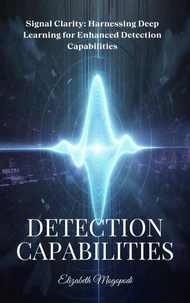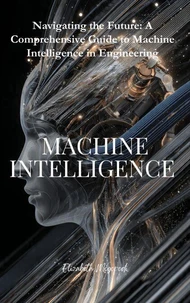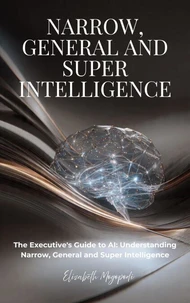Nouveauté
Navigating Machine Intelligence: A Comprehensive Guide for Practitioners. MACHINE INTELLIGENCE
Par :Formats :
Disponible dans votre compte client Decitre ou Furet du Nord dès validation de votre commande. Le format ePub est :
- Compatible avec une lecture sur My Vivlio (smartphone, tablette, ordinateur)
- Compatible avec une lecture sur liseuses Vivlio
- Pour les liseuses autres que Vivlio, vous devez utiliser le logiciel Adobe Digital Edition. Non compatible avec la lecture sur les liseuses Kindle, Remarkable et Sony
 , qui est-ce ?
, qui est-ce ?Notre partenaire de plateforme de lecture numérique où vous retrouverez l'ensemble de vos ebooks gratuitement
Pour en savoir plus sur nos ebooks, consultez notre aide en ligne ici
- FormatePub
- ISBN8232564322
- EAN9798232564322
- Date de parution17/11/2025
- Protection num.pas de protection
- Infos supplémentairesepub
- ÉditeurHamza elmir
Résumé
The promise of machine intelligence is vast, but the path from prototype to production is fraught with unforeseen challenges-from data drift and model decay to ethical quandaries and organizational resistance. "Navigating Machine Intelligence: A Comprehensive Guide for Practitioners" is designed as a trusted field guide for data scientists, ML engineers, and technical leaders who are in the trenches, building and deploying intelligent systems.
It provides a holistic, practitioner-first perspective that is often missing in academic curricula, bridging the critical gap between theoretical knowledge and the nuanced demands of industry application. This guide structures the journey into a coherent and actionable framework. It begins with a clear-eyed assessment of the landscape, helping practitioners identify the right problems for machine intelligence and avoid the common pitfall of using a "solution in search of a problem." The book then dives deep into the foundational elements, offering pragmatic advice on data sourcing, curation, and governance-the unglamorous yet absolutely critical bedrock upon which all successful projects are built.
It covers the model development lifecycle with a focus on practicality, exploring not only a selection of key algorithms but, more importantly, the principles of robust experimentation, rigorous validation, and interpretability. Where this guide truly distinguishes itself is in its extensive coverage of the post-research phases. It provides a detailed roadmap for navigating the complexities of MLOps (Machine Learning Operations), including model deployment, versioning, monitoring, and continuous integration.
It tackles the reality of maintaining intelligence in a dynamic world, with strategies for detecting and mitigating model staleness and performance degradation. A significant and vital portion of the text is dedicated to the ethical and practical imperatives of building responsible AI, offering frameworks for ensuring fairness, mitigating bias, and cultivating transparency and trust. Filled with real-world case studies, checklists, and lessons learned from industry experts, "Navigating Machine Intelligence" is more than a book-it is a mentor.
It equips practitioners with the strategic mindset and tactical tools needed to confidently lead projects that are not only technically sound but also scalable, maintainable, and aligned with core business values and human-centric principles. For anyone looking to move beyond code snippets and contribute meaningfully to the future of intelligent technology, this comprehensive guide is an indispensable resource.
It provides a holistic, practitioner-first perspective that is often missing in academic curricula, bridging the critical gap between theoretical knowledge and the nuanced demands of industry application. This guide structures the journey into a coherent and actionable framework. It begins with a clear-eyed assessment of the landscape, helping practitioners identify the right problems for machine intelligence and avoid the common pitfall of using a "solution in search of a problem." The book then dives deep into the foundational elements, offering pragmatic advice on data sourcing, curation, and governance-the unglamorous yet absolutely critical bedrock upon which all successful projects are built.
It covers the model development lifecycle with a focus on practicality, exploring not only a selection of key algorithms but, more importantly, the principles of robust experimentation, rigorous validation, and interpretability. Where this guide truly distinguishes itself is in its extensive coverage of the post-research phases. It provides a detailed roadmap for navigating the complexities of MLOps (Machine Learning Operations), including model deployment, versioning, monitoring, and continuous integration.
It tackles the reality of maintaining intelligence in a dynamic world, with strategies for detecting and mitigating model staleness and performance degradation. A significant and vital portion of the text is dedicated to the ethical and practical imperatives of building responsible AI, offering frameworks for ensuring fairness, mitigating bias, and cultivating transparency and trust. Filled with real-world case studies, checklists, and lessons learned from industry experts, "Navigating Machine Intelligence" is more than a book-it is a mentor.
It equips practitioners with the strategic mindset and tactical tools needed to confidently lead projects that are not only technically sound but also scalable, maintainable, and aligned with core business values and human-centric principles. For anyone looking to move beyond code snippets and contribute meaningfully to the future of intelligent technology, this comprehensive guide is an indispensable resource.
The promise of machine intelligence is vast, but the path from prototype to production is fraught with unforeseen challenges-from data drift and model decay to ethical quandaries and organizational resistance. "Navigating Machine Intelligence: A Comprehensive Guide for Practitioners" is designed as a trusted field guide for data scientists, ML engineers, and technical leaders who are in the trenches, building and deploying intelligent systems.
It provides a holistic, practitioner-first perspective that is often missing in academic curricula, bridging the critical gap between theoretical knowledge and the nuanced demands of industry application. This guide structures the journey into a coherent and actionable framework. It begins with a clear-eyed assessment of the landscape, helping practitioners identify the right problems for machine intelligence and avoid the common pitfall of using a "solution in search of a problem." The book then dives deep into the foundational elements, offering pragmatic advice on data sourcing, curation, and governance-the unglamorous yet absolutely critical bedrock upon which all successful projects are built.
It covers the model development lifecycle with a focus on practicality, exploring not only a selection of key algorithms but, more importantly, the principles of robust experimentation, rigorous validation, and interpretability. Where this guide truly distinguishes itself is in its extensive coverage of the post-research phases. It provides a detailed roadmap for navigating the complexities of MLOps (Machine Learning Operations), including model deployment, versioning, monitoring, and continuous integration.
It tackles the reality of maintaining intelligence in a dynamic world, with strategies for detecting and mitigating model staleness and performance degradation. A significant and vital portion of the text is dedicated to the ethical and practical imperatives of building responsible AI, offering frameworks for ensuring fairness, mitigating bias, and cultivating transparency and trust. Filled with real-world case studies, checklists, and lessons learned from industry experts, "Navigating Machine Intelligence" is more than a book-it is a mentor.
It equips practitioners with the strategic mindset and tactical tools needed to confidently lead projects that are not only technically sound but also scalable, maintainable, and aligned with core business values and human-centric principles. For anyone looking to move beyond code snippets and contribute meaningfully to the future of intelligent technology, this comprehensive guide is an indispensable resource.
It provides a holistic, practitioner-first perspective that is often missing in academic curricula, bridging the critical gap between theoretical knowledge and the nuanced demands of industry application. This guide structures the journey into a coherent and actionable framework. It begins with a clear-eyed assessment of the landscape, helping practitioners identify the right problems for machine intelligence and avoid the common pitfall of using a "solution in search of a problem." The book then dives deep into the foundational elements, offering pragmatic advice on data sourcing, curation, and governance-the unglamorous yet absolutely critical bedrock upon which all successful projects are built.
It covers the model development lifecycle with a focus on practicality, exploring not only a selection of key algorithms but, more importantly, the principles of robust experimentation, rigorous validation, and interpretability. Where this guide truly distinguishes itself is in its extensive coverage of the post-research phases. It provides a detailed roadmap for navigating the complexities of MLOps (Machine Learning Operations), including model deployment, versioning, monitoring, and continuous integration.
It tackles the reality of maintaining intelligence in a dynamic world, with strategies for detecting and mitigating model staleness and performance degradation. A significant and vital portion of the text is dedicated to the ethical and practical imperatives of building responsible AI, offering frameworks for ensuring fairness, mitigating bias, and cultivating transparency and trust. Filled with real-world case studies, checklists, and lessons learned from industry experts, "Navigating Machine Intelligence" is more than a book-it is a mentor.
It equips practitioners with the strategic mindset and tactical tools needed to confidently lead projects that are not only technically sound but also scalable, maintainable, and aligned with core business values and human-centric principles. For anyone looking to move beyond code snippets and contribute meaningfully to the future of intelligent technology, this comprehensive guide is an indispensable resource.

